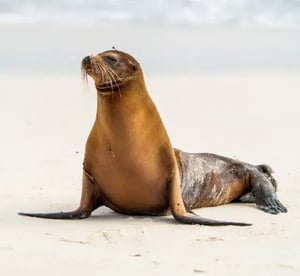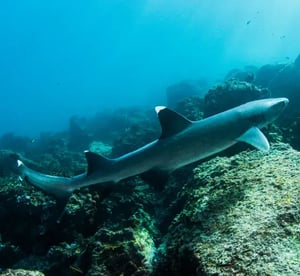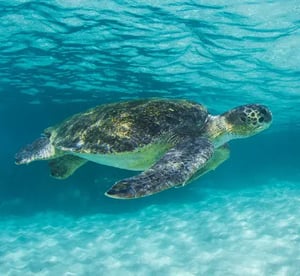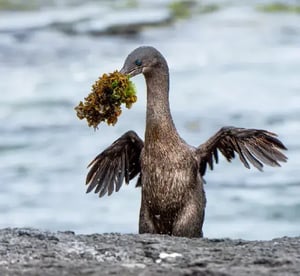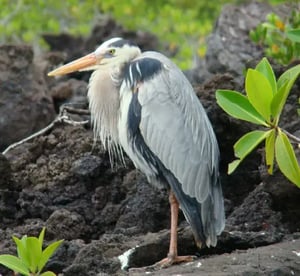
GALAPAGOS FRIGATEBIRD
The frigatebird is widely spread on the coasts of South America. There are two species in the Galapagos: the Magnificent and the Great frigate bird.
The Great frigate bird is also found in other pacific regions and the Indian Ocean and tends to forage far out in the sea to avoid competition. They have a green sheen on the scapular feathers and have a white collar on the neck.
The Magnificent is the biggest species of frigate bird, distinct from the other by lacking a white axillary spur, and have a purple sheen on the scapular feathers. The Galapagos Magnificent is considered endemic subspecies to the archipelago.
This bird is well known for its ability to steal food. As it is not waterproof, it had to adapt to feeding in ways that wouldn’t need entering the water to catch fish. So they became really good on chasing birds, catching leftovers and pushing birds to vomit in order to feed themselves. In the Galapagos, they are commonly seen after blue-footed boobies who they chase to a point of stress until they vomit, or they will be grabbed by the tail sand shaking them. Also found around pelicans and fishing boats in search of any leftover.
This bird does not need much food to survive; they have also adapted to useless amount of energy, in order to need the less amount of food. Their bones are filled with air making them very light, they barely need to move their wings when flying high and are the most efficient flyers of all. They can never land on water and they can spend more than one week hanging on the wind currents up in the sky.
They have the famous courtship ritual in which males inflate their red chest globes in order to attract females. They build a nest in a tree and compete with other males for the biggest, safest and strongest nest along with the brightest most long lasting throat pouch.
They mate once a year on the cold season creating big colonies and lay one egg that would hatch after 50 days. The chicks spend one whole year with the parents before reaching independence. They would only reproduce after reaching sexual maturity at the age of 10.
Yes
Endemic
Seabirds
Animal group
Fregata magnificens
Scientific name
215 cm
Animal average size
1.1 kg
Animal average weigth
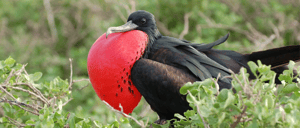
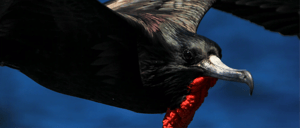
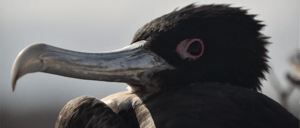

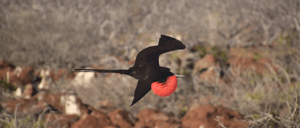
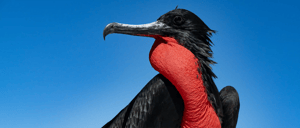
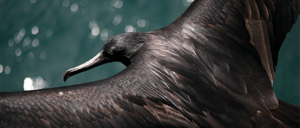
Where to spot this animal?
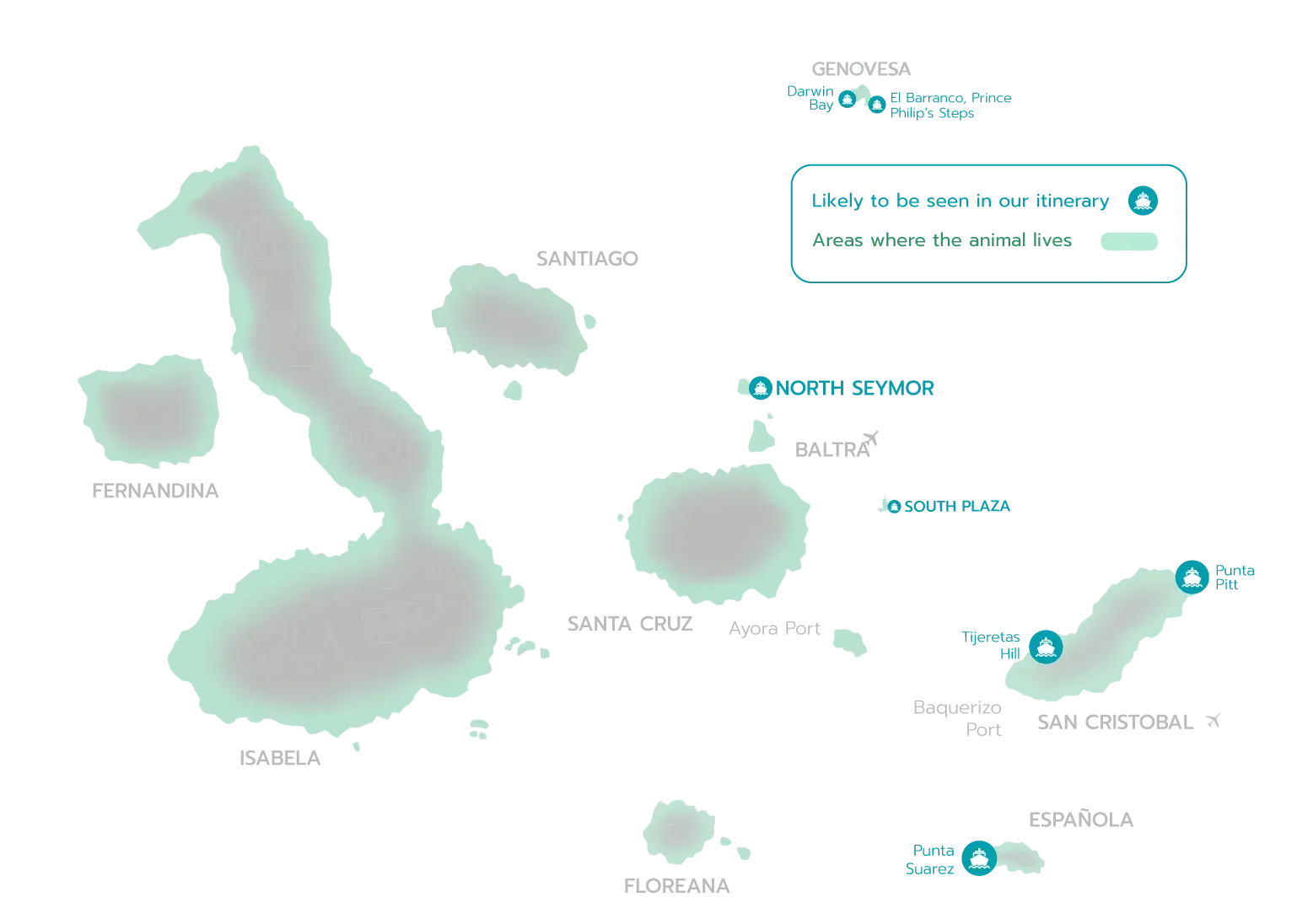
Expeditions where you can find this animal
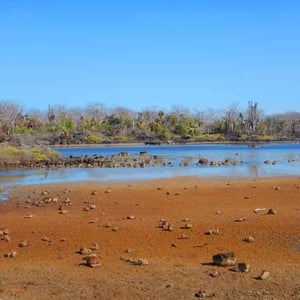
NORTH EXPEDITION (A)
Visitor sites:
> El Barranco, Prince Philip's Steps

EAST EXPEDITION (C)
Visitor sites:
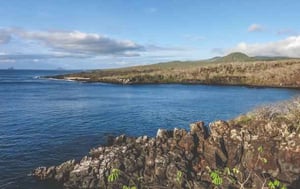
SOUTH EXPEDITION (D)
Visitor sites:
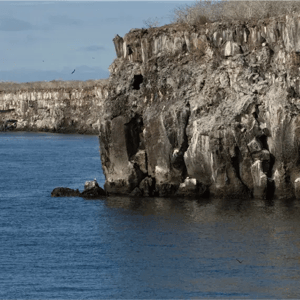
NORTH EXPEDITION (A)
Visitor sites:
> El Barranco, Prince Philip's Steps
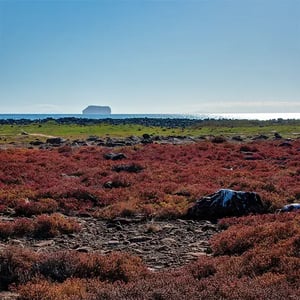
EAST EXPEDITION (C)
Visitor sites:

